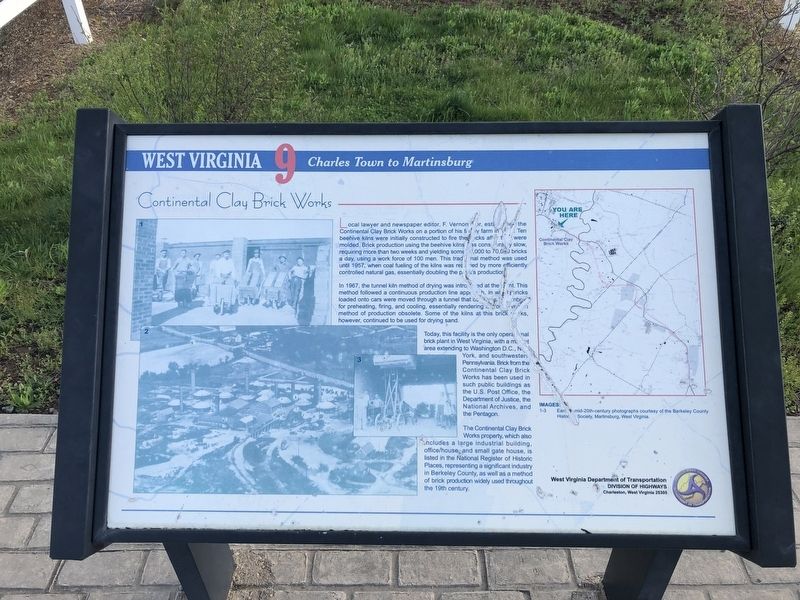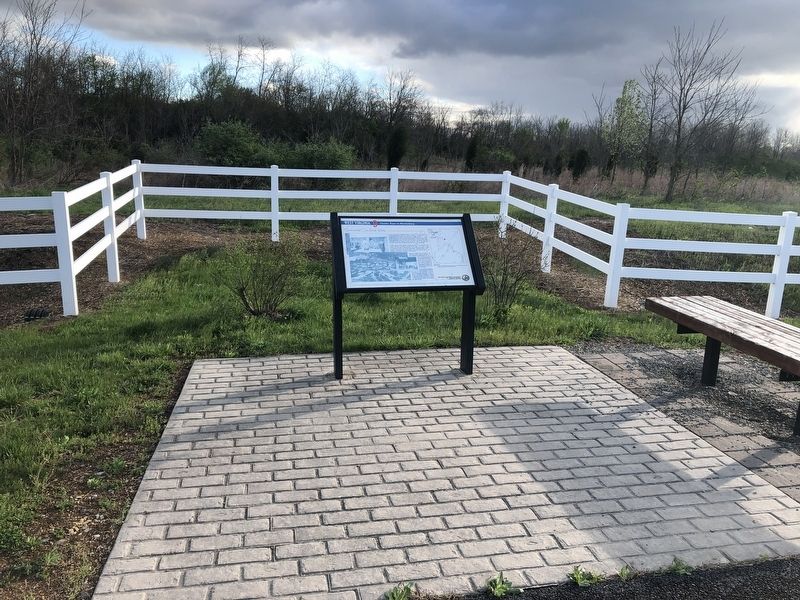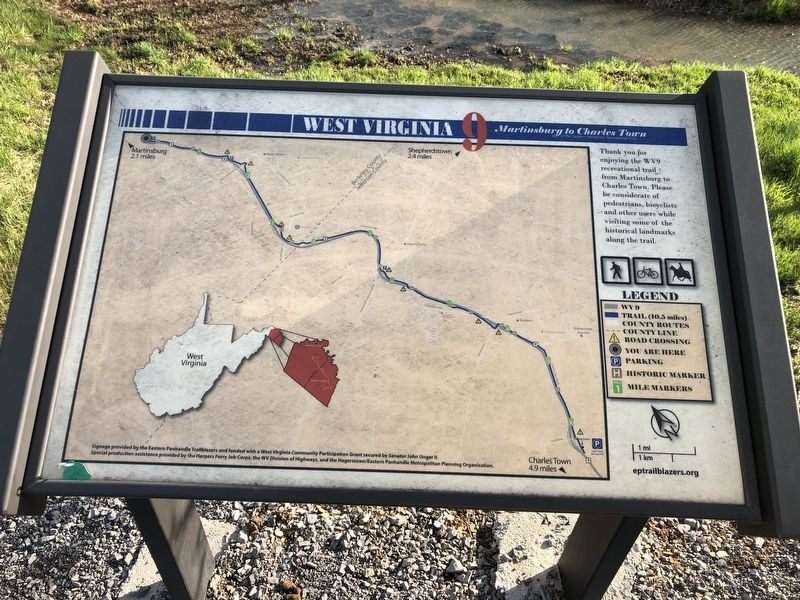Near Martinsburg in Berkeley County, West Virginia — The American South (Appalachia)
Continental Clay Brick Works
West Virginia 9
— Charles Town to Martinsburg —
Local lawyer and newspaper editor, F. Vernon [unreadable], established the Continental Clay ?Brick works on a portion of his family farm in [unreadable]. Ten beehive kilns were initially constructed to fire the bricks after they were molded. Brick production using the beehive kilns was considerably slow, requiring more than two weeks and yielding some [unreadable] to 70,000 bricks a day, using a work force of 100 men. This traditional method was used until 1957, when coal fueling of the kilns was replaced by more efficiently controlled natural gas, essentially doubling the plant's production.
In 1967, the tunnel kiln method of drying was introduced at the plant. This method followed a continuous production line approach, in which bricks loaded onto cars were moved through a tunnel that [unreadable] for preheating, firing, and cooling, essentially rendering [unreadable] method of production obsolete. Some of the kilns at this brick works, however, continued to be used for drying sand.
Today, this facility is the only operational brick plant in West Virginia, with a market area extending to Washington D.C., New York, and southwestern Pennsylvania. Brick from the Continental Clay Brick Works has been used in such public buildings as the U.S. Post Office, the Department of Justice, the National Archives, and the Pentagon.
The Continental Clay Brick Works property, which also includes a large industrial building, office/house, and small gate house, is listed in the National Register of Historic Places, representing a significant industry in Berkeley County, as well as a method of brick production widely used throughout the 19th century.
Erected by West Virginia Department of Transportation, Division of Highways.
Topics and series. This historical marker is listed in this topic list: Industry & Commerce. In addition, it is included in the West Virginia 9 series list. A significant historical year for this entry is 1957.
Location. 39° 25.981′ N, 77° 57.298′ W. Marker has been reported unreadable. Marker is near Martinsburg, West Virginia, in Berkeley County. Marker is on Charles Town Road (West Virginia Route 9) east of Variform Drive (County Route 9/14). Touch for map. Marker is at or near this postal address: 1508 Charles Town Road, Martinsburg WV 25405, United States of America. Touch for directions.
Other nearby markers. At least 8 other markers are within 2 miles of this location, measured as the crow flies. Major General Adam Stephen (approx. 1.3 miles away); Charles Faulkner (approx. 1.3 miles away); Boydville (approx. 1.4 miles away); Site of Belle Boyd Home (approx. 1.4 miles away); St. John's Catholic Cemetery (approx. 1˝ miles away); Gen. Adam Stephen
Credits. This page was last revised on June 28, 2023. It was originally submitted on April 18, 2019, by Devry Becker Jones of Washington, District of Columbia. This page has been viewed 332 times since then and 27 times this year. Photos: 1, 2, 3. submitted on April 18, 2019, by Devry Becker Jones of Washington, District of Columbia.


